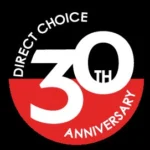Continuing along the “green” path established in our previous post, Tapping into Conscious Consumerism?, we’ve been looking into the ways in which the natural world influences marketing.
Engineers have long been exploring biomimicry to advance technology and develop new products. Velcro is one of the earliest examples. It was created when a Swiss electrical engineer looked into how seeds clung to his clothing and his dog when he walked in the woods. More recently, scientists have been researching mother nature’s DNA molecules as an incredibly compact and stable source of massive data storage.
In the marketing world, we have been tapping nature, often unknowingly, through rules that have developed over time. Of course, there’s always room to learn more…
We are all flower children
Humans are not unlike bees and butterflies when it comes to bright colors. The plants apparently know this, using yellows, blues, pinks, and purples to stand out from the background and attract the insects they need to perpetuate the spread of pollen. We all know what happens to marketing that blends in or shouts without delivering value.
Color is just the beginning of the flower’s attractive power. Scents and nectars are equally necessary to their survival. Flowers have even evolved to provide a stable landing area for their insect friends. This makes you wonder, is my advertising working hard enough to attract eyes and convert prospects? Are my landing pages working to make life easier for consumers? Do I reward customers enough to keep them coming back?
Beware the red berries
Well, they aren’t all toxic but it’s no accident that red is a color that grabs our attention and can be associated with alarm. We’ve evolved to pay attention to all things red whether its blood, fire, the setting sun, or that Netflix logo.
The golden ratio spiral
You see it in the arrangement of a sunflower’s seeds, on the pinecones, and in superior logo design. This ratio is based on numbers that appear in the Fibonacci sequence which is sometimes referred to as nature’s universal rule. In the man-made world, it’s applied in graphic design and architecture to make proportions aesthetically pleasing to the eye.
Behold the extremophile
We’re all familiar with the phrase “adapt or die” in terms of the natural and marketing worlds. Extremophiles take this bit of advice to the … uh … extreme. These highly-specialized organisms have adapted to survive our Earth’s most severe living conditions. They thrive in places such as toxic volcanic vents and arctic glaciers where life is least expected. This has to give you hope. No matter how dire your marketing landscape may appear, chances are there’s an innovative approach that could keep you alive or even propel you to the top of the food chain.
It boggles the mind when you think about the diversity of life on this planet and how much that is yet to be discovered. That’s the beauty of being a life-long learner. You have an endless supply of new knowledge and ideas that you can apply to your corner of the world.





 We are thrilled to announce that Direct Choice,
We are thrilled to announce that Direct Choice,







